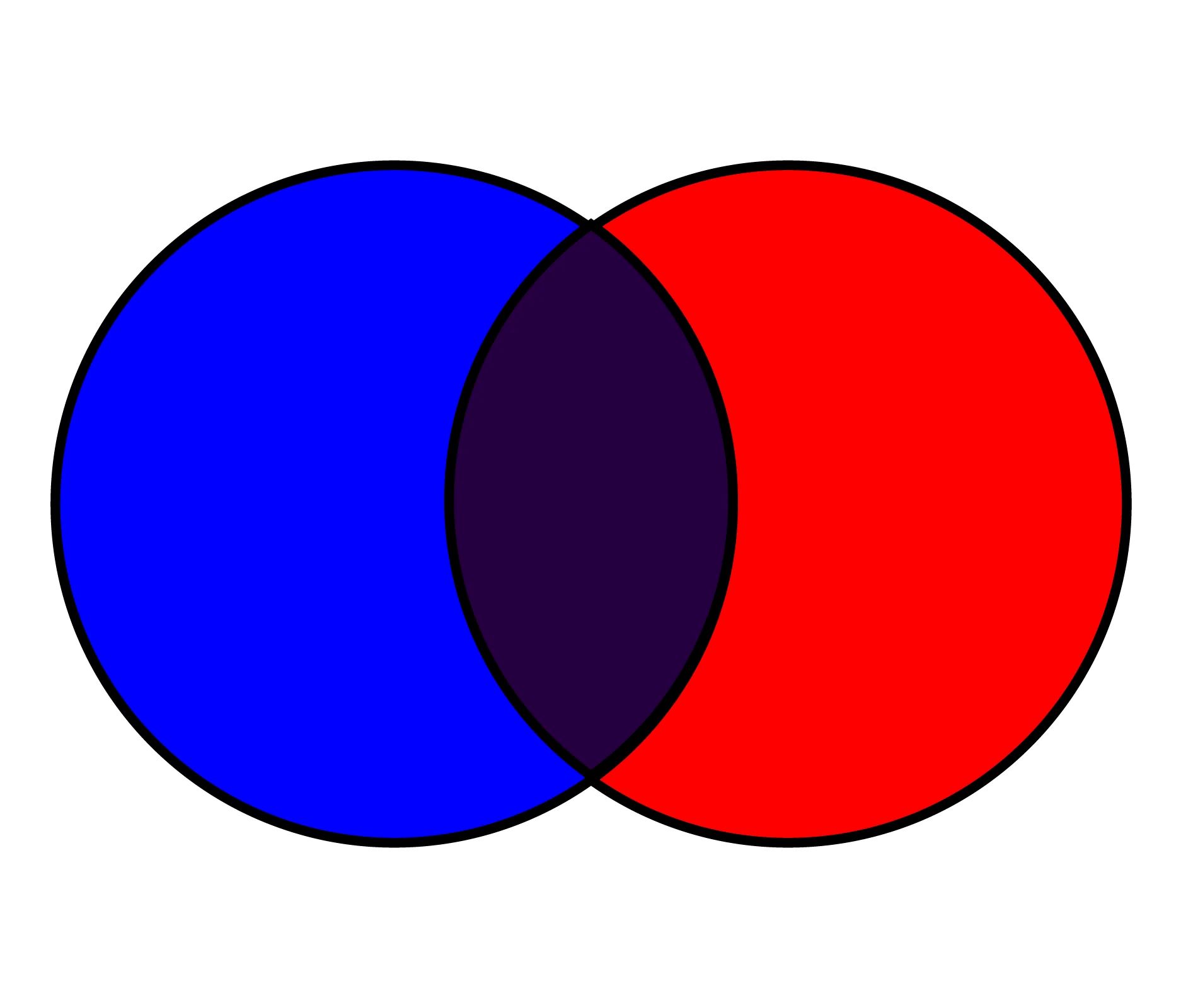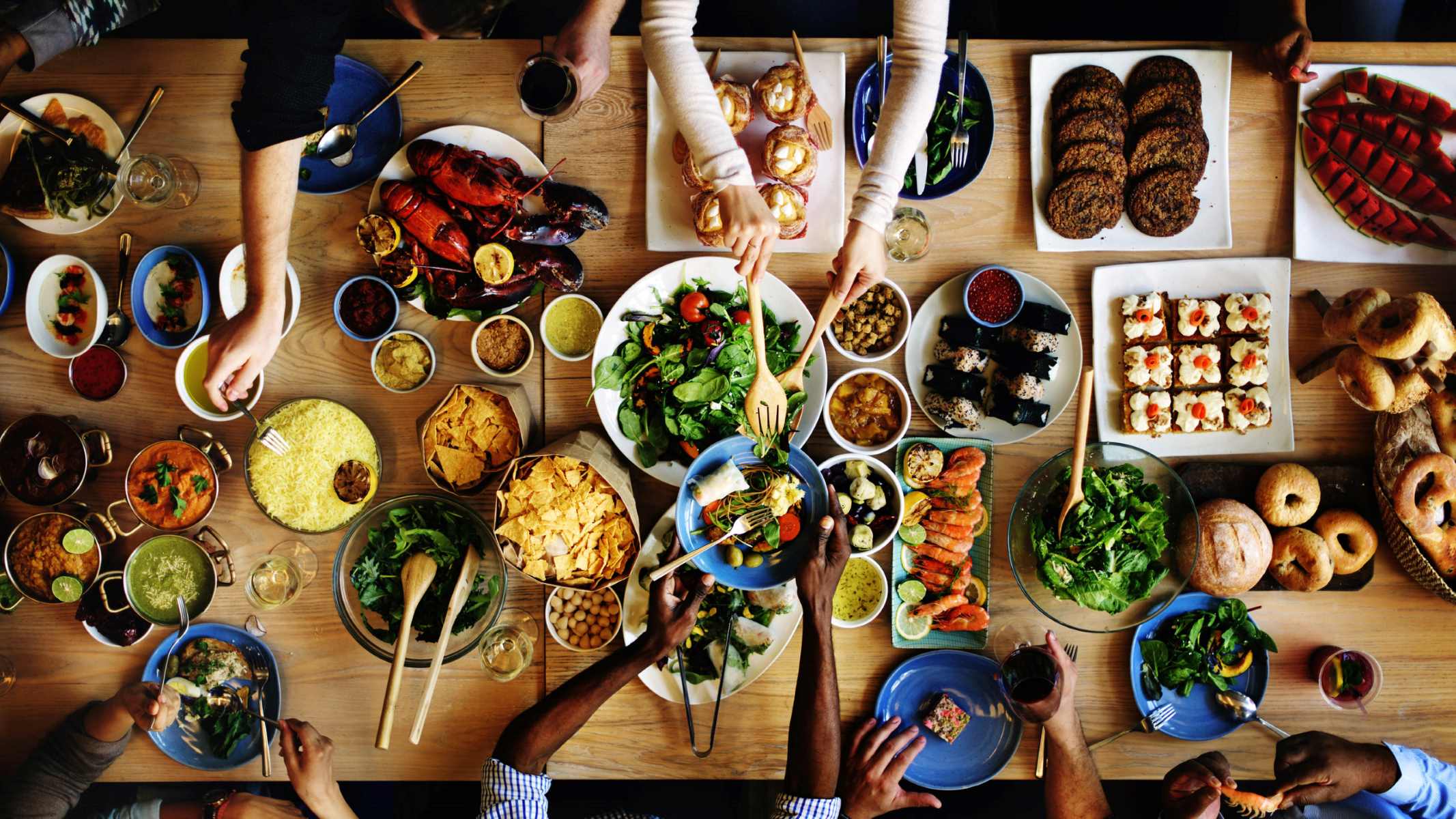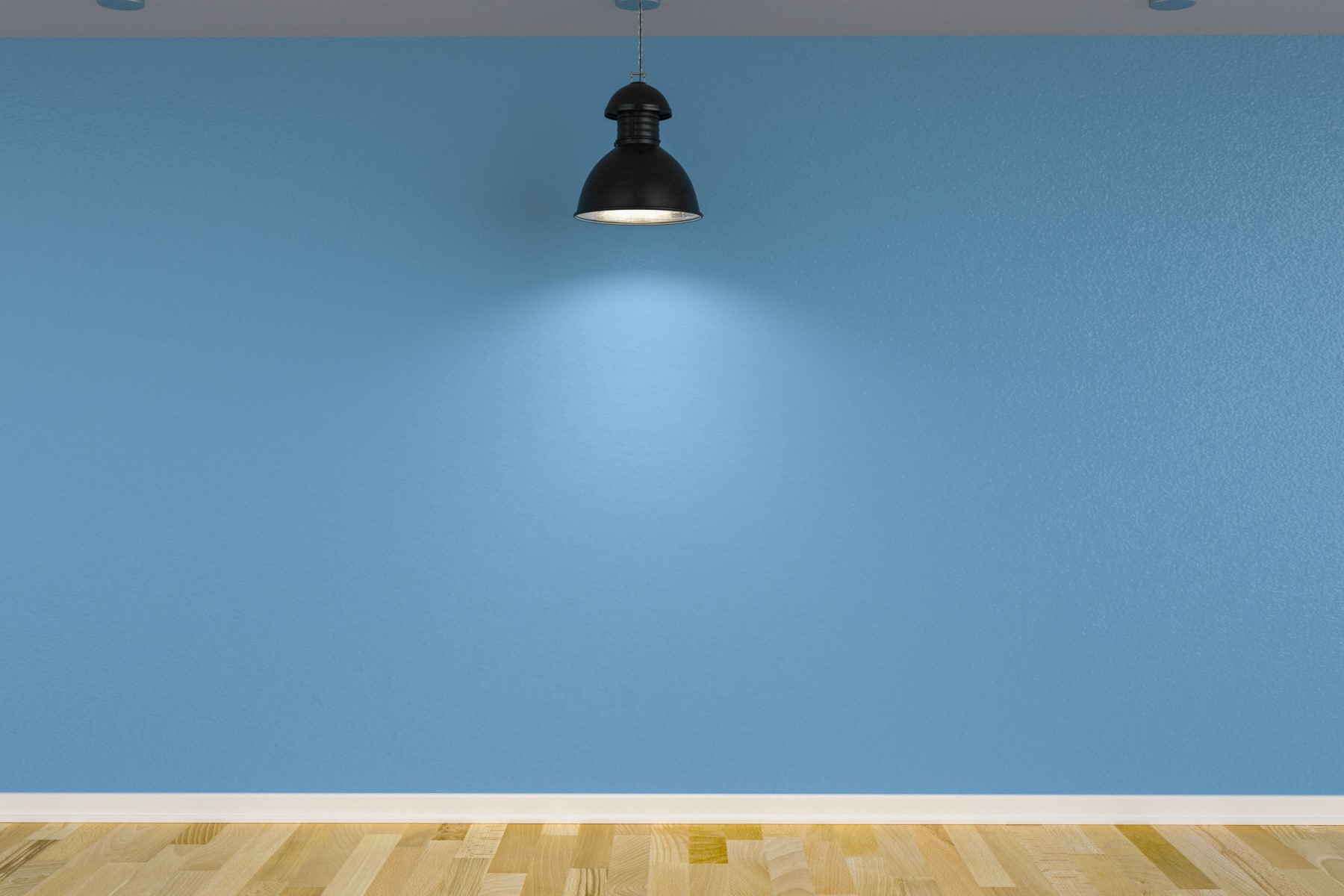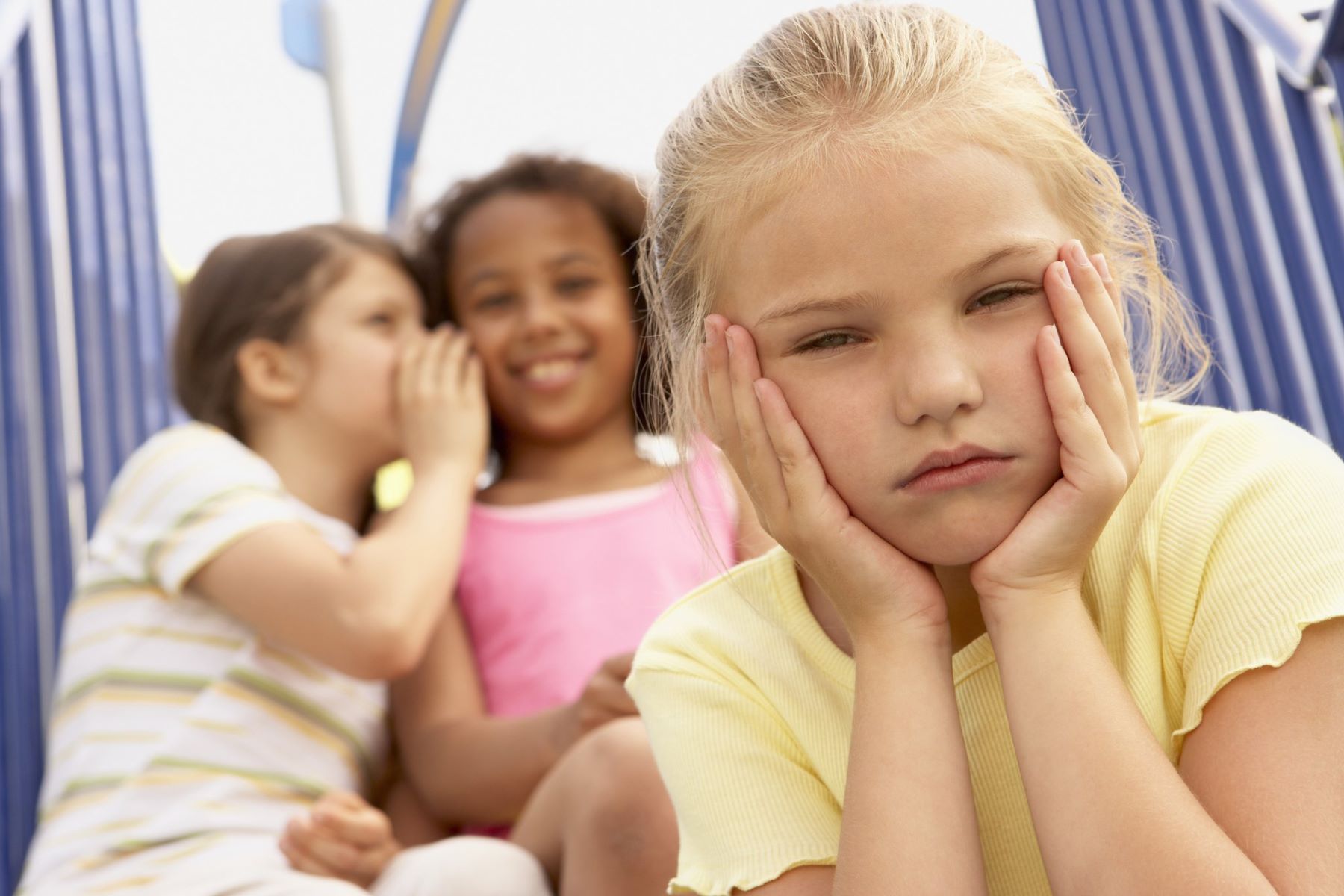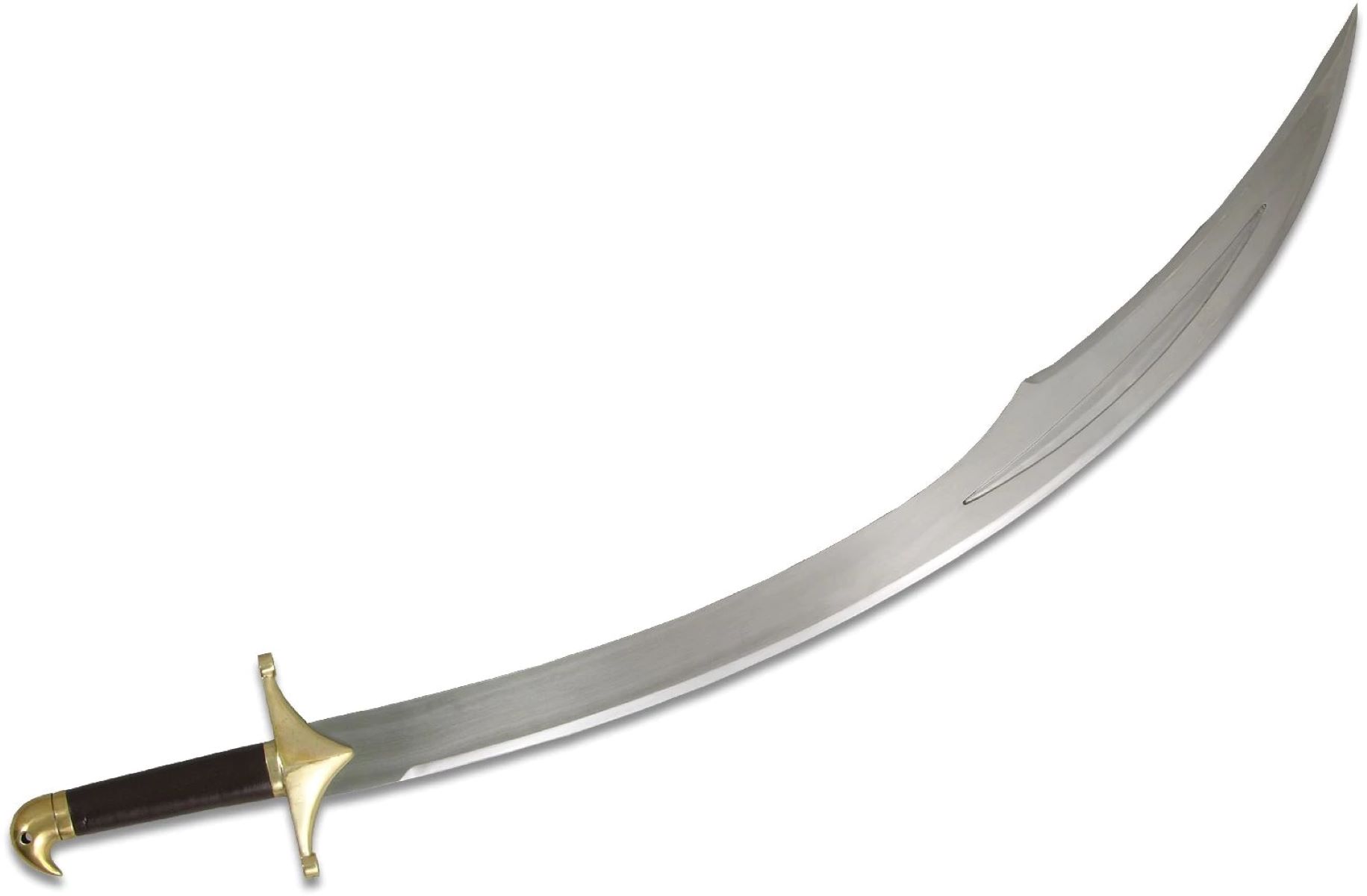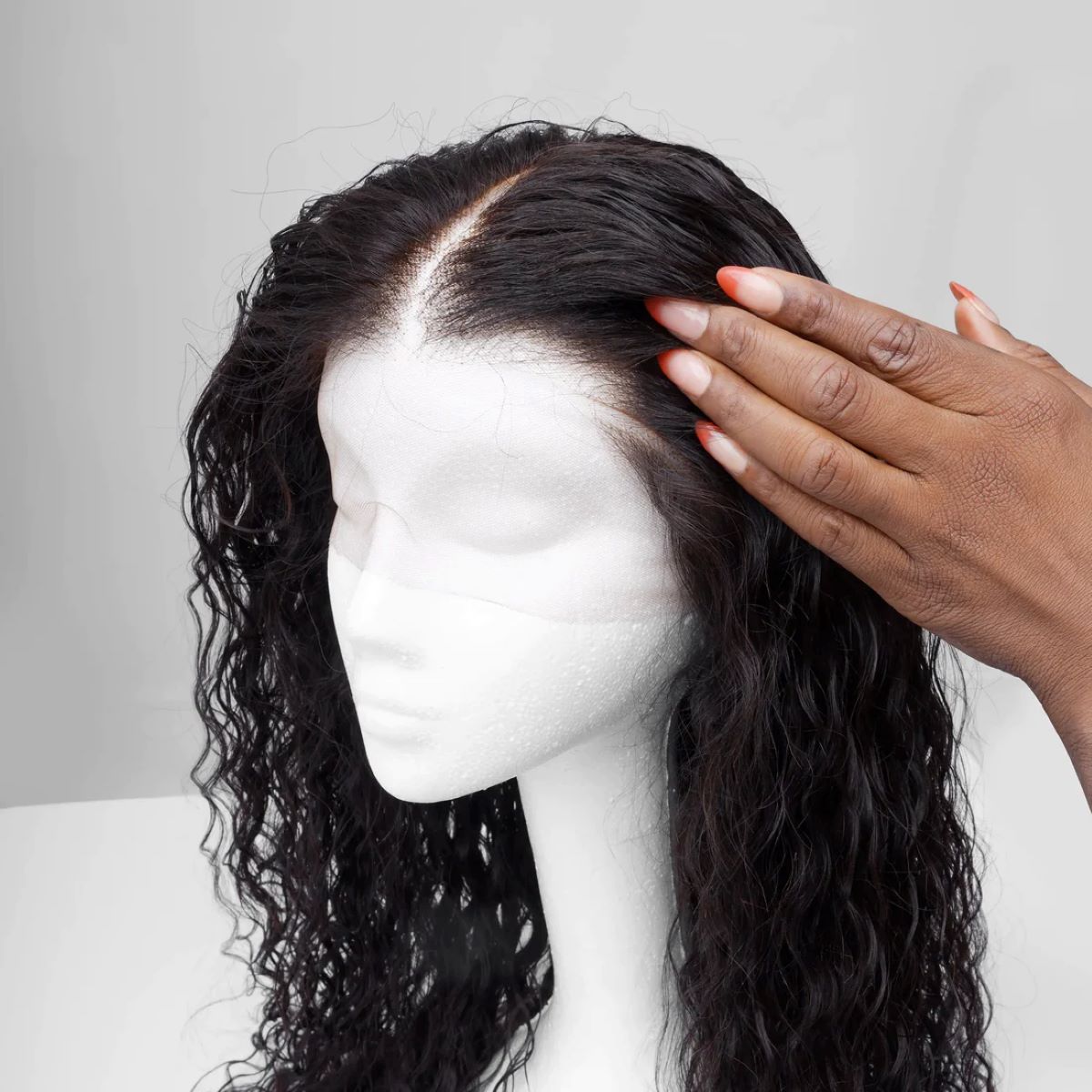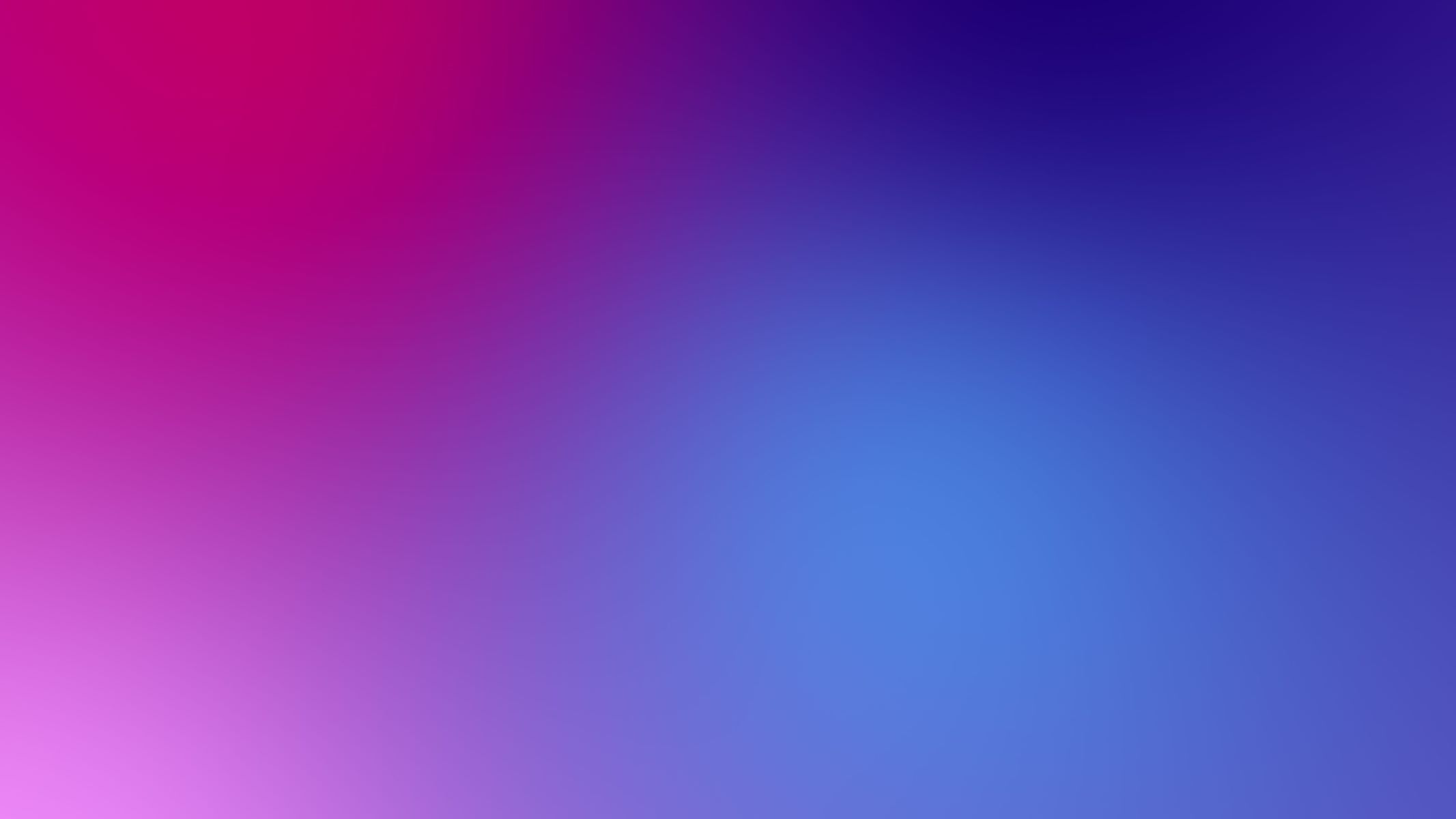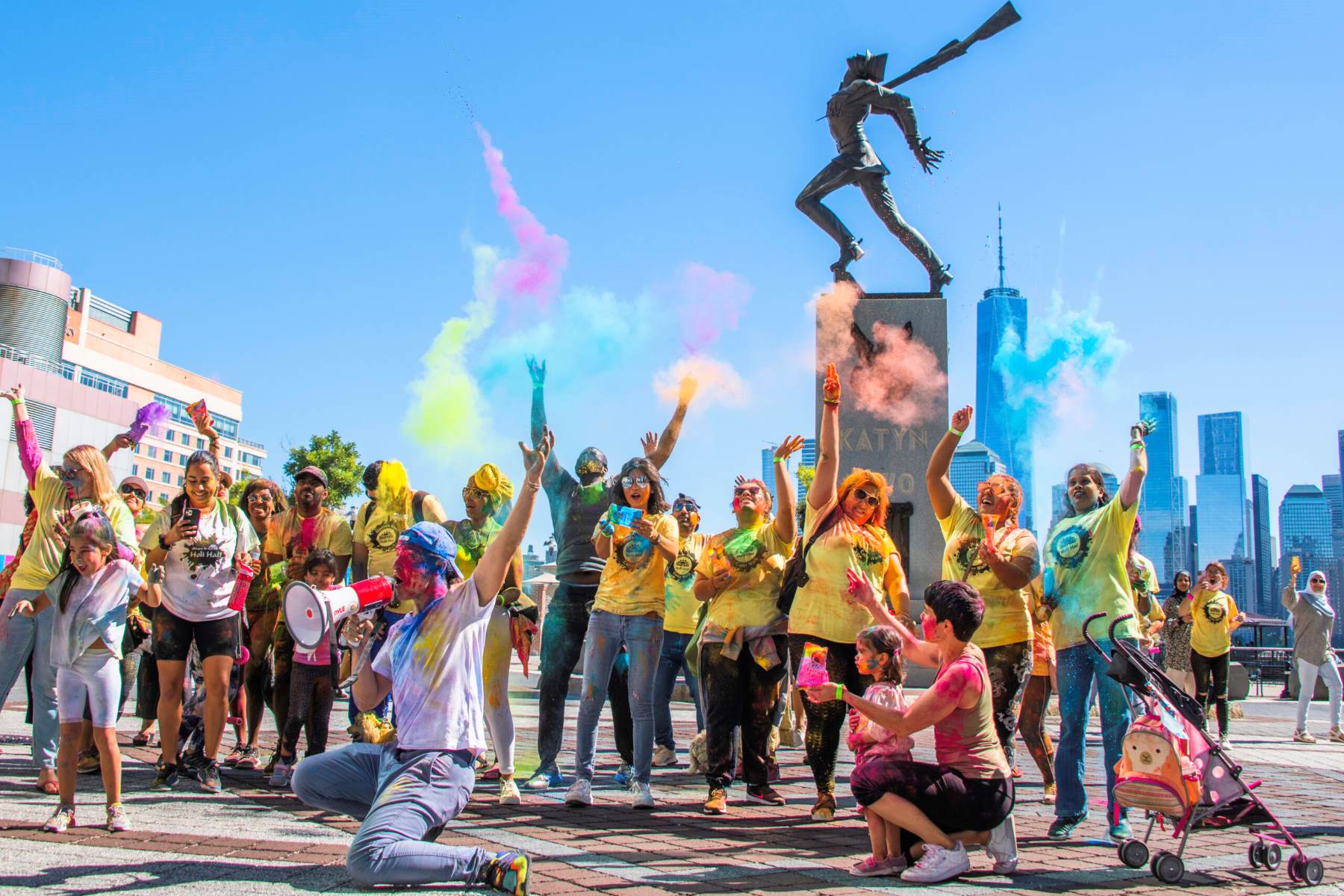Home>Arts and Culture>Unleash Your Inner Artist: The Ultimate Guide To Mixing Colors And Creating The Perfect Shade Of Blue
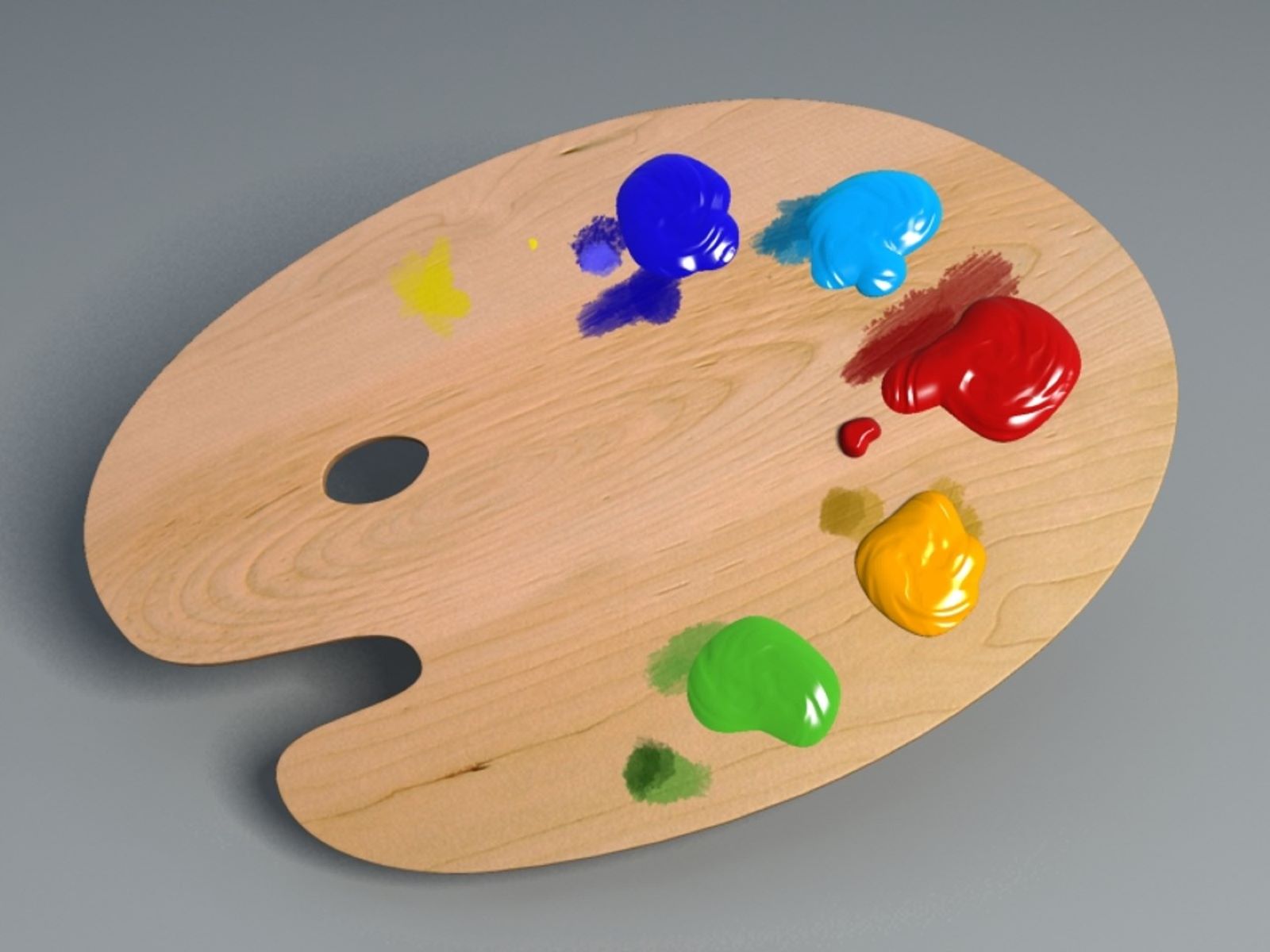

Arts and Culture
Unleash Your Inner Artist: The Ultimate Guide To Mixing Colors And Creating The Perfect Shade Of Blue
Published: January 18, 2024
Unleash your creativity with our ultimate guide to mixing colors and creating the perfect shade of blue. Explore the world of arts and culture to elevate your artistic skills.
(Many of the links in this article redirect to a specific reviewed product. Your purchase of these products through affiliate links helps to generate commission for Regretless.com, at no extra cost. Learn more)
Table of Contents
Introduction
Art has the remarkable ability to evoke emotions, tell stories, and ignite the imagination. At the heart of every masterpiece lies the captivating interplay of colors, each hue contributing to the overall visual narrative. Whether you're an aspiring artist or a seasoned creative seeking to expand your skills, understanding the art of mixing colors is essential for unleashing your inner artist.
In this comprehensive guide, we will delve into the captivating world of color theory, unlocking the secrets of the color wheel and exploring the nuances of primary, secondary, and tertiary colors. We will also unravel the techniques for mixing colors effectively, culminating in the creation of the perfect shade of blue. By the end of this journey, you will be equipped with the knowledge and confidence to embark on your own vibrant artistic endeavors.
Let's embark on this colorful odyssey, where we will unravel the mysteries of color, ignite our creativity, and paint the canvas of our imagination with an exquisite spectrum of hues.
Understanding the Color Wheel
The color wheel is a fundamental tool that serves as a visual representation of the relationships between colors. It is a circular arrangement of hues, showcasing the primary, secondary, and tertiary colors in a harmonious and systematic manner. By comprehending the color wheel, artists gain valuable insights into color relationships, enabling them to create visually appealing and balanced compositions.
Primary Colors
At the core of the color wheel lie the primary colors: red, yellow, and blue. These hues are considered the building blocks of all other colors and cannot be created by mixing other colors together. When combined in various proportions, primary colors give rise to a vast spectrum of secondary and tertiary colors, forming the basis of color mixing in art.
Secondary Colors
Located between the primary colors, secondary colors are the result of mixing equal parts of two primary colors. The secondary colors are green (a combination of yellow and blue), orange (a fusion of red and yellow), and violet (the product of red and blue). These vibrant hues expand the color palette, offering artists a broader range of options for self-expression and creativity.
Tertiary Colors
Tertiary colors emerge from the fusion of a primary color with an adjacent secondary color on the color wheel. This results in six unique tertiary colors, such as red-orange, yellow-green, and blue-violet. Tertiary colors possess a rich complexity, adding depth and nuance to artistic compositions.
By grasping the intricate dynamics of the color wheel, artists can harness the power of color to convey emotions, evoke moods, and infuse their creations with visual allure. This foundational knowledge serves as a springboard for exploring color mixing techniques and embarking on the exhilarating journey of creating the perfect shades and tones that breathe life into artistic masterpieces.
Primary Colors
Primary colors serve as the cornerstone of the color wheel, wielding immense significance in the realm of art and design. Comprising red, yellow, and blue, these hues stand as the elemental pillars from which all other colors are derived. Their intrinsic nature lies in their inability to be generated by mixing other colors, rendering them indispensable in the process of color creation.
Red, the fervent and evocative primary color, symbolizes passion, energy, and intensity. It commands attention and exudes warmth, making it a pivotal component in artistic expressions that seek to convey dynamism and emotion. Whether used as a dominant force or in subtle accents, red holds the power to captivate and stir the senses, leaving an indelible impression on the viewer.
Yellow, the radiant and illuminating primary color, embodies optimism, joy, and vitality. Its luminous presence infuses artworks with a sense of cheerfulness and positivity, enlivening the visual narrative with its sunny disposition. Symbolic of enlightenment and creativity, yellow holds the potential to uplift the spirit and inject a sense of exuberance into artistic compositions.
Blue, the serene and contemplative primary color, evokes tranquility, depth, and introspection. Its cool and calming essence imbues artworks with a sense of serenity and harmony, inviting viewers to immerse themselves in its tranquil embrace. Whether depicting vast skies or tranquil waters, blue resonates with a sense of expansiveness and evokes a myriad of emotions, from peacefulness to contemplation.
When these primary colors intertwine, a symphony of hues unfolds, giving rise to an extensive spectrum of secondary and tertiary colors. The dynamic interplay of red, yellow, and blue serves as the foundation for artists to craft captivating palettes, infuse their creations with emotion, and convey narratives that resonate with depth and vibrancy.
In the realm of color theory, the primary colors stand as the bedrock upon which artistic expressions are built. Their individual characteristics and collective synergy form the essence of color mixing, paving the way for artists to unleash their creativity and breathe life into their creations through the captivating language of color.
Secondary Colors
Located between the primary colors, secondary colors are the result of mixing equal parts of two primary colors. The secondary colors are green (a combination of yellow and blue), orange (a fusion of red and yellow), and violet (the product of red and blue). These vibrant hues expand the color palette, offering artists a broader range of options for self-expression and creativity.
Green: As the amalgamation of yellow and blue, green embodies the lushness of nature, symbolizing growth, renewal, and vitality. It exudes a sense of harmony and balance, evoking images of verdant landscapes and flourishing foliage. Green holds the power to instill a feeling of tranquility and connection with the natural world, making it a versatile and evocative hue in artistic compositions.
Orange: A vibrant fusion of red and yellow, orange radiates warmth, energy, and enthusiasm. It exudes a sense of exuberance and vibrancy, infusing artworks with a dynamic and invigorating presence. Symbolic of creativity and adventure, orange captivates the eye and ignites the imagination, adding a spirited touch to artistic expressions.
Violet: The result of blending red and blue, violet embodies a sense of mystery, elegance, and introspection. Its enigmatic allure conveys a blend of regality and tranquility, evoking a sense of enchantment and sophistication. Whether used to convey a sense of opulence or to infuse an air of mystique, violet enriches artistic compositions with its alluring and enigmatic presence.
These secondary colors not only expand the artist's palette but also hold the potential to evoke specific emotions and moods. Whether used individually or in conjunction with other hues, secondary colors offer a wealth of creative possibilities, enabling artists to imbue their creations with depth, emotion, and visual intrigue.
By understanding the intricate dynamics of secondary colors and their relationship to primary hues, artists can harness the power of color to convey nuanced narratives, evoke emotions, and craft visually captivating compositions that resonate with viewers on a profound level.
Tertiary Colors
Tertiary colors emerge from the fusion of a primary color with an adjacent secondary color on the color wheel. This results in six unique tertiary colors, such as red-orange, yellow-green, and blue-violet. Tertiary colors possess a rich complexity, adding depth and nuance to artistic compositions.
Red-Orange:
Red-orange exudes a fiery and invigorating energy, blending the passion of red with the warmth of orange. It symbolizes vitality, creativity, and fervor, making it a compelling choice for artists seeking to infuse their creations with a sense of dynamism and vibrancy. Whether used to depict blazing sunsets or vibrant floral arrangements, red-orange commands attention and injects a burst of intensity into artistic narratives.
Yellow-Green:
Yellow-green embodies the verdant splendor of nature, capturing the essence of lush foliage and sun-dappled meadows. It evokes feelings of growth, freshness, and renewal, infusing artworks with a rejuvenating and harmonious presence. Symbolic of vitality and abundance, yellow-green holds the power to transport viewers to idyllic natural landscapes, inviting them to revel in the beauty of the natural world.
Blue-Violet:
Blue-violet emanates a sense of enchantment and contemplation, blending the tranquility of blue with the mystery of violet. It exudes a serene and ethereal allure, evoking images of twilight skies and enigmatic floral hues. Symbolic of introspection and sophistication, blue-violet invites viewers to immerse themselves in its enigmatic beauty, eliciting a sense of wonder and intrigue.
Red-Violet:
Red-violet encapsulates a captivating blend of passion and elegance, intertwining the fervent energy of red with the regal allure of violet. It conveys a sense of opulence and allure, adding a touch of drama and sophistication to artistic compositions. Whether used to evoke a sense of romance or to infuse a composition with a hint of mystique, red-violet captivates the eye and ignites the imagination.
Blue-Green:
Blue-green harmonizes the calming influence of blue with the rejuvenating essence of green, resulting in a hue that embodies tranquility, balance, and vitality. It conjures images of serene waters and verdant landscapes, evoking a sense of harmony and connection with the natural world. Symbolic of serenity and renewal, blue-green infuses artworks with a soothing and revitalizing presence, inviting viewers to immerse themselves in its tranquil allure.
Yellow-Orange:
Yellow-orange radiates a spirited and luminous energy, fusing the exuberance of orange with the radiant warmth of yellow. It symbolizes joy, optimism, and creativity, infusing artistic compositions with a sense of cheerfulness and vitality. Whether used to evoke the brilliance of a sun-kissed day or to convey a sense of exuberant celebration, yellow-orange enlivens artworks with its sunny and uplifting presence.
By embracing the nuanced interplay of tertiary colors, artists unlock a world of creative possibilities, allowing them to infuse their creations with depth, emotion, and visual intrigue. These rich and complex hues serve as a testament to the boundless expressive potential of color, empowering artists to craft captivating narratives and evoke profound emotions through the artful fusion of hues.
Color Mixing Techniques
The art of color mixing is a captivating alchemy that empowers artists to transform a limited palette of primary colors into a rich tapestry of hues and shades. Through the adept manipulation of pigments, artists can achieve an expansive range of tones, tints, and shades, breathing life and depth into their creations. Here, we delve into the diverse techniques of color mixing, unveiling the methods that enable artists to unleash the full potential of their palettes.
1. Direct Mixing:
Direct mixing involves physically blending two or more colors together to create a new hue. Artists can use a palette knife or brush to intermix the pigments on a palette or canvas, adjusting the proportions to achieve the desired color. This hands-on approach allows for immediate experimentation and fine-tuning, enabling artists to swiftly explore a myriad of color variations.
2. Color Overlapping:
By layering translucent or transparent colors over one another, artists can achieve the effect of color overlapping. This technique is particularly effective in creating nuanced gradients and subtle transitions between hues. Through meticulous layering and strategic application of colors, artists can imbue their artworks with depth and dimension, adding a captivating visual complexity to their compositions.
3. Glazing:
Glazing involves applying thin, transparent layers of color over a base layer to modify its hue or alter its tonal value. This technique allows artists to achieve luminous and ethereal effects, as the underlying layers subtly influence the perceived color of the glaze. By skillfully manipulating the interplay of transparent hues, artists can evoke a sense of radiance and depth, infusing their artworks with a captivating luminosity.
4. Color Mixing with a Limited Palette:
Working with a limited palette of primary colors challenges artists to explore the full potential of color mixing. By mastering the art of blending primary hues, artists can create an extensive array of secondary and tertiary colors, showcasing the versatility and expressive richness of a restrained color palette. This approach encourages resourcefulness and ingenuity, prompting artists to push the boundaries of color mixing to achieve remarkable depth and vibrancy in their artworks.
5. Optical Color Mixing:
Optical color mixing, often associated with pointillism and optical art, exploits the phenomenon of color perception to create vibrant and visually dynamic compositions. By juxtaposing small dots or strokes of pure, unmixed colors, artists can stimulate the viewer's eyes to blend the hues optically, resulting in a heightened sense of luminosity and vibrancy. This technique capitalizes on the interaction between colors to produce captivating visual effects, inviting viewers to immerse themselves in a mesmerizing interplay of hues.
Incorporating these color mixing techniques into their artistic repertoire empowers artists to transcend the limitations of their palettes, unleashing a boundless spectrum of colors and tones. Whether through direct blending, subtle layering, or the strategic use of transparent glazes, artists can harness the transformative power of color, infusing their creations with depth, luminosity, and emotive resonance. By mastering these techniques, artists embark on a journey of endless discovery and innovation, where the language of color becomes a vibrant and evocative narrative that captivates the senses and stirs the soul.
Creating the Perfect Shade of Blue
Creating the perfect shade of blue is an artful endeavor that requires a delicate balance of precision and intuition. Blue, with its evocative tranquility and timeless allure, holds a special place in the artist's palette, offering a myriad of possibilities for conveying emotions and narratives. Whether seeking to capture the serene depths of a tranquil sea or the ethereal expanse of a boundless sky, mastering the art of crafting the perfect shade of blue is a transformative journey that unfolds through meticulous exploration and experimentation.
To embark on this creative odyssey, artists often begin with a base of primary blue pigment, such as ultramarine or cerulean blue. These foundational hues serve as the starting point for crafting a diverse range of blue shades, each imbued with its own unique character and expressive potential. By adeptly manipulating the intensity, temperature, and undertones of the blue pigment, artists can achieve a spectrum of captivating shades that resonate with depth and emotion.
One approach to refining the perfect shade of blue involves the strategic addition of complementary or analogous colors to modulate its tonal quality. By introducing a touch of complementary orange or red to a cool blue base, artists can infuse the shade with a subtle warmth and vibrancy, adding a dynamic dimension to its visual impact. Conversely, blending in hints of complementary green or violet can create cooler, more enigmatic variations of blue, evoking a sense of mystery and contemplation.
The judicious use of white and black pigments also plays a pivotal role in tailoring the luminosity and depth of blue shades. By carefully incorporating varying degrees of white, artists can create an array of ethereal, pastel-like blues that exude a sense of airiness and lightness. On the other hand, the controlled addition of black allows for the development of deep, moody blues that evoke a profound sense of depth and introspection.
Furthermore, the technique of layering translucent glazes of blue over existing colors can yield mesmerizing variations, as the interplay of transparent pigments imbues the shade with a captivating luminosity and complexity. This method enables artists to achieve nuanced gradations and subtle shifts in hue, enriching their artworks with a sense of depth and dimension.
Ultimately, the quest to create the perfect shade of blue transcends technical precision, inviting artists to tap into their intuition and emotional resonance with the color. It is a process of discovery and revelation, where each brushstroke and pigment blend becomes a poetic dialogue between the artist and the evocative essence of blue. Through patient exploration and unwavering creativity, artists unlock the boundless expressive potential of blue, infusing their creations with a captivating spectrum of shades that resonate with the soul and captivate the imagination.
Tips for Mixing Colors
-
Start with a Limited Palette: Begin with a restrained selection of primary colors, such as red, yellow, and blue, to hone your color mixing skills. Working with a limited palette encourages resourcefulness and deepens your understanding of color relationships.
-
Practice Color Gradation: Experiment with creating smooth transitions between hues by gradually blending lighter and darker tones. Mastering color gradation allows you to imbue your artworks with a sense of depth and dimension.
-
Observe Color Temperatures: Pay attention to the temperature of colors, distinguishing between warm and cool tones. Understanding color temperatures empowers you to evoke specific moods and atmospheres in your compositions.
-
Embrace Transparency: Explore the use of transparent and translucent colors to achieve luminous effects and subtle color overlays. Transparent glazes can add a sense of radiance and complexity to your artworks.
-
Utilize a Color Mixing Chart: Create a color mixing chart to visually document the outcomes of blending different proportions of primary colors. This serves as a valuable reference for understanding color combinations and achieving precise hues.
-
Experiment with Complementary Colors: Delve into the dynamic interplay of complementary colors, such as red and green or blue and orange, to create vibrant contrasts and harmonious color schemes in your artworks.
-
Trust Your Intuition: Allow your instincts and emotional connection to guide your color mixing process. Embrace spontaneity and intuition as you explore the expressive potential of hues and shades.
-
Patience and Persistence: Color mixing is a skill that develops with practice and patience. Embrace the journey of continuous experimentation and refinement, allowing yourself to learn and grow with each exploration of color.
By incorporating these tips into your artistic practice, you will embark on a rewarding journey of color exploration, enhancing your ability to craft captivating palettes and evoke profound emotions through the artful fusion of hues.
Conclusion
In the realm of art, color serves as a potent language that transcends barriers and communicates with profound emotional resonance. Through the captivating interplay of primary, secondary, and tertiary colors, artists embark on a journey of creative exploration, infusing their compositions with depth, emotion, and visual allure. The color wheel stands as a timeless guide, offering a roadmap to understanding the harmonious relationships between hues and empowering artists to craft captivating palettes that resonate with viewers on a visceral level.
As artists delve into the art of color mixing, they unlock a world of expressive potential, transforming a limited palette of primary colors into an expansive spectrum of shades, tones, and tints. The techniques of direct mixing, color overlapping, glazing, and optical color mixing become tools of alchemical transformation, allowing artists to breathe life and luminosity into their creations. Whether through the strategic blending of complementary colors, the judicious use of white and black pigments, or the subtle layering of translucent glazes, artists orchestrate a symphony of hues that captivate the senses and evoke profound emotions.
The quest to create the perfect shade of blue encapsulates the essence of artistic exploration, inviting artists to marry technical precision with intuitive expression. Through meticulous experimentation and a deep emotional connection to the color, artists craft a diverse array of blue shades, each imbued with its own evocative allure and narrative resonance. This process of discovery and revelation unfolds as a poetic dialogue between the artist and the captivating essence of blue, inviting viewers to immerse themselves in a mesmerizing spectrum of hues that stir the soul and ignite the imagination.
As artists embrace the tips for mixing colors and immerse themselves in the artful fusion of hues, they embark on a journey of endless discovery and innovation. With patience, persistence, and an unwavering commitment to artistic exploration, they hone their ability to evoke emotions, convey narratives, and captivate the senses through the transformative power of color.
In conclusion, the art of mixing colors transcends technical proficiency, evolving into a profound narrative that speaks to the human experience. It is a testament to the boundless expressive potential of color, empowering artists to craft compositions that resonate with depth, emotion, and visual intrigue. With each brushstroke and pigment blend, artists breathe life into their creations, weaving a tapestry of hues that captivate the eye, stir the soul, and invite viewers into a world of boundless artistic expression.
